Table of Contents
Courier delivery tracking software is the technological backbone of today’s courier services, offering real-time parcel tracking and comprehensive management solutions. This software streamlines every aspect of operations, from dispatching and routing to confirming deliveries, ensuring that each step in the delivery process is efficiently managed.
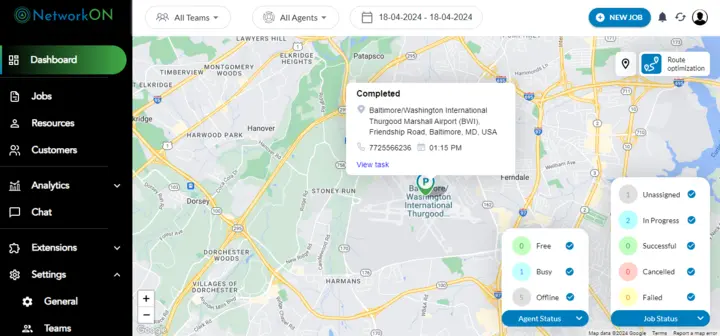
By leveraging courier delivery tracking software, courier businesses can significantly boost operational efficiency and enhance customer satisfaction. Monitoring deliveries in real-time allows couriers to improve delivery times and meet the transparency standards that customers now expect, keeping them competitive in a rapidly evolving market.
Top 5 courier delivery tracking software
Explore the top 5 courier delivery tracking software that streamline logistics, enhance real-time visibility, and ensure efficient parcel management for businesses of all sizes.
NetworkON
NetworkON is a comprehensive delivery management platform that optimizes logistics with real-time tracking, route optimization, and automated dispatching. It’s designed for businesses needing high scalability and customization.
Pros:
- Customizable Workflows: Allows tailored workflows to match specific business needs.
- Scalability: Supports large-scale operations, making it ideal for enterprises with high delivery volumes.
Cons:
- Complex Setup: The advanced features require a steep learning curve during the initial setup.
- Higher Cost: Premium features can lead to higher costs, which may not be suitable for smaller businesses.
Onfleet
Onfleet offers a user-friendly delivery management solution with powerful analytics, real-time tracking, and efficient driver management. It is widely used across various industries for its ease of use.
Pros:
- Ease of Use: Intuitive interface that simplifies delivery management for users at all levels.
- Real-time Analytics: Provides insightful analytics to optimize delivery performance and efficiency.
Cons:
- Limited Customization: This may need deeper customization options for businesses with specific or unique needs.
- Higher Pricing for Smaller Teams: The pricing structure might need to be more attractive for smaller teams or businesses with low delivery volumes.
Shippo
Shippo is a shipping software that offers multi-carrier shipping solutions with real-time tracking, label creation, and shipment management. It’s well-suited for eCommerce businesses.
Pros:
- Multi-carrier Support: Easily integrates with various carriers, allowing businesses to choose the most cost-effective options.
- Integration Capabilities: Seamlessly integrates with eCommerce platforms, making managing shipping from a single platform easy.
Cons:
- Limited Advanced Features: Lacks advanced features like route optimization and driver management.
- Performance Issues: Some users report occasional performance issues during high-volume periods.
Routific, Inc.
Routific specializes in route optimization for delivery businesses, offering features that streamline delivery routes, reduce fuel costs, and improve overall efficiency.
Pros:
- Efficient Route Optimization: Highly effective at reducing delivery times and fuel costs through advanced route optimization algorithms.
- User-friendly Interface: Simple and easy to navigate, making it accessible for small and medium-sized businesses.
Cons:
- Limited Scope: Focuses primarily on route optimization, lacking broader delivery management features like real-time tracking.
- Scalability Issues: This may scale less effectively for larger businesses with more complex delivery needs.
Elite Extra
Elite Extra provides advanced dispatch management and real-time tracking solutions for same-day and last-mile deliveries. It is known for its robust scheduling and routing capabilities.
Pros:
- Advanced Scheduling: Offers sophisticated scheduling and dispatching tools that cater to complex delivery operations.
- Customer Communication: Provides real-time notifications and updates to customers, enhancing customer service.
Cons:
- Steeper Learning Curve: The advanced features may require more time and training to master.
- Costly for Small Operations: The comprehensive features might be more than what’s needed for smaller businesses, leading to unnecessary costs.
Enhancing Real-Time Package Tracking and Customer Satisfaction
Advancements in real-time package tracking have transformed the landscape of courier services, making transparent and reliable shipment updates not just an added feature but a standard expectation. Customers now anticipate the ability to monitor their parcels at every step of the journey.
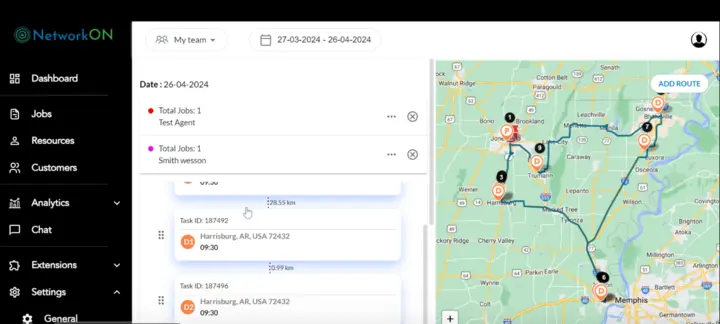
Real-time tracking provides more than location updates; it affords peace of mind. Customers can better plan their packages’ arrival by accessing live tracking information. This access reduces customer anxiety associated with the wait. It significantly decreases the volume of inquiries couriers receive regarding parcel whereabouts.
Transparency garnered through state-of-the-art tracking systems does forge stronger customer trust. They reassure customers that the service provider values their delivery as much as they do. Such transparency increases the likelihood of repeat business, as trust is critical to consumer loyalty. Additionally, tracking data also serves as a tool for accountability. Customers can see when a package hits an unexpected delay, and companies can proactively address any issues.
- Customers feel informed and in control.
- Customer service representatives are equipped to address concerns with accurate information.
- Customer trust escalates when they witness a courier’s commitment to delivery transparency.
Customers are engaged throughout the delivery by sending proactive and personalized updates through email or SMS, creating a positive, tailored experience. Take, for example, the power of a system that accurately predicts the estimated arrival time; customers are appreciatively tethered to the process without feeling overwhelmed by uncertainty.
Have you ever wondered how real-time tracking might affect customer satisfaction in tangible ways? When evaluating the success of this feature, consider the professional dimension it adds to your courier brand, reflecting a commitment to efficient, customer-centric service. A sophisticated courier delivery tracking software capitalizes on this trend, reinforcing your company’s dedication to excellence in logistics.
Revolutionizing Last-Mile Delivery for Peak Efficiency
Last-mile delivery presents complex challenges, often characterized by unpredictable variables such as traffic congestion, customer availability, and route deviations. Recognizing last-mile connections’ pivotal role in the logistics chain, courier delivery tracking software emerges as a transformative tool. Equipped with sophisticated algorithms and real-time data analytics, such software sharpens the efficiency of final delivery stages, significantly slashing time expenditure and resource depletion.
Addressing Last-Mile Logistics Hurdles with Advanced Technology
Dissecting the challenges of last-mile delivery pinpoints inefficiencies that directly impact costs and customer satisfaction. Resolving these issues requires a comprehensive approach, for which courier delivery tracking software is ingeniously designed. By facilitating precise tracking, offering route optimization, and providing essential data insights, these systems enable carriers to perform swift, cost-effective deliveries.
Deploying Software Strategies for Improved Delivery Outcomes
- Pinpointing strategic drop-off points minimizes travel distance, reduces fuel consumption, and enhances the number of deliveries executed within a given timeframe.
- Software-driven dynamic routing accounts for real-time traffic patterns, leading to more predictable delivery windows and fewer delays.
- Predictive analytics furnished by the software anticipates potential issues, allowing for proactive measures rather than reactive firefighting.
- Using the software’s data analytics capabilities, couriers can analyze performance, identify patterns, and continuously refine their delivery strategies.
The intersection of software capabilities with last-mile delivery requires a harmonious symmetry between technology and human effort. Delivery professionals with this powerful software stand at the forefront of service excellence. They are adept at meeting customers’ ever-growing convenience, speed, and reliability expectations. As these software solutions evolve, they refine current best practices and chart a pathway toward groundbreaking delivery methodologies that conserve time and resources while expanding operational horizons.
Pro Tip: Optimize last-mile delivery by leveraging real-time data analytics and dynamic routing software to reduce delays and enhance efficiency.
Transforming Customer Interactions via State-of-the-Art Notification Systems
Timely notifications and direct communication channels enable businesses to streamline customer interactions throughout the delivery process. Customers expect updates regarding their package’s location and projected delivery time; meeting these expectations correlates with improved customer satisfaction.
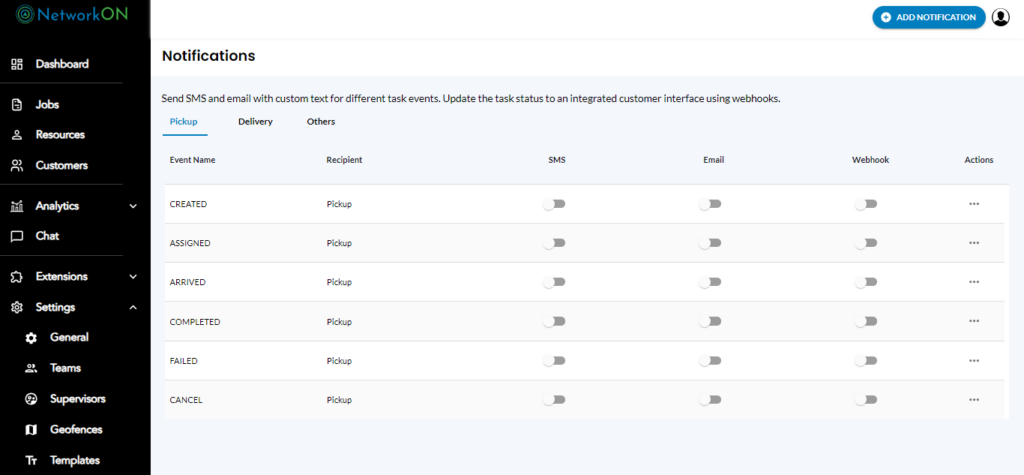
Automated customer alerts and updates ensure customers receive timely information without manual intervention. Once a package moves through various stages of the delivery process, the tracking software can trigger notifications to the customer’s email or mobile device. Businesses create a transparent delivery journey by setting up these automated communications, significantly reducing customer service inquiries about package whereabouts.
- Automated text messages can alert customers when their package is out for delivery or if there is an unexpected delay.
- Emails provide detailed updates and can include an estimated arrival time or a link to a live tracking map.
- In-app notifications within the company’s mobile application can enhance the user experience by offering real-time updates and facilitating direct communication with the courier.
Enhancing communication capabilities through an effective customer notification system is not an isolated benefit; it influences the entire customer experience, encouraging repeat business and fostering trust between the provider and the consumer. With the right courier delivery tracking software, businesses harness the potential to keep customers informed, satisfied, and loyal.
Streamlining Operations with Barcode Scanning and Package Handling
Barcode scanning instantly recognizes packages throughout the delivery chain. Inherent to modern courier delivery tracking software, this process transforms package identification and sorting from a manual and error-prone task into a swift, accurate, and automatic procedure.
Explanation of Barcode Scanning in Package Management
When couriers implement barcode scanning, each package with a unique barcode enters the operational ecosystem. Scanners read the barcodes, instantly pulling up associated data about the shipment’s journey—from origin to destination, check-in, and all transit points. This transition from visual checks to technological accuracy accelerates all facets of package handling.
How Barcode Technology Enhances Package Handling Efficiency
Efficiency elevates as barcode scanning technology interfaces seamlessly with courier delivery tracking software, annotating every scan with a timestamp and location data. This real-time tracking history ensures that employees have immediate access to the information needed to make informed decisions regarding routing, dispatch, and customer service. Barcode scanning conducts thoroughfare of packages quickly and minimizes human errors, leading to increased throughput and customer satisfaction.
Delivered goods move through supply chains and distribution centers, where strategically placed barcode scanners identify and sort them with minimal manual intervention, expediting the process. The software equipped with barcode recognition capabilities swiftly adapts to the enhanced data input, offering users immediate updates on package status—a feature indispensable for efficiency and reliable service.
Employing barcode scanning within courier delivery systems enhances the overall agility of package handling operations, enabling businesses to meet the high expectations of punctuality and service quality demanded in today’s fast-paced logistic environments.
Streamline Your Courier Operations with Flawless Software Integration
Integrating courier delivery tracking software into existing business systems provides a seamless operational flow by bridging the gap between disparate software applications. Whether dealing with accounting databases or inventory management systems, harmonizing software tools is non-negotiable for a connected business environment.
Executing integration begins with a comprehensive analysis of current software ecosystems and ends with end-to-end solution testing. Businesses can achieve smooth integration with minimal operational disruption by employing meticulous data mapping and interface customization. Staff training is also imperative to ensure immediate adeptness with the new integrated system.
To approach integration methodically, businesses adopt robust middleware and APIs that allow data to flow unimpeded between systems. Compatibility checks and thorough scrutiny of software interfaces preempt potential mismatches. Companies ensure their software communicates efficiently by homogenizing data formats and fine-tuning synchronization periods.
Moreover, customization capabilities are essential for aligning the courier delivery tracking software features with a business’s unique processes. Tailoring the software to fit into the existing IT architecture eschews the one-size-fits-all approach and acknowledges each enterprise’s distinct needs.
- Integration with existing software systems is necessary to foster a unified ecosystem, catalyze process efficiency, and build a reliable data infrastructure.
- Businesses ensure the integrity of their operations by selecting courier delivery tracking software with comprehensive integration capabilities.
- Seamless data flow and functionality across all business aspects are non-negotiable for modern enterprises, affirming the need for compatible courier tracking software.
Analytics: The Lens Through Which Delivery Performance Comes Into Focus
Reporting and analytics are indispensable for scrutinizing delivery performance. With data-driven insights, businesses can uncover areas needing enhancement and drive overall efficiency. As the market becomes more dynamic and customer expectations soar, the ability to analyze performance metrics positions courier companies at the forefront of service and operational excellence.
Decoding Delivery Performance with Comprehensive Analytics
Data is transformative when its power is fully harnessed. Exploring the myriad types of delivery analytics available is essential to make data work for your business. Delivery times, success rates, and customer feedback metrics comprehensively understand performance. Likewise, analyzing route efficiency can illuminate potential bottlenecks.
Turning Data into Decisions
Data is only as valuable as the business decisions it informs. By interpreting analytics, businesses can make informed choices that tangibly improve their delivery systems. For instance, noticing trends in delivery delays can lead to strategic changes in routing or scheduling. Proactively responding to such insights enhances performance and fortifies customer satisfaction.
- Analyzing delivery times pinpoints inefficiencies.
- Studying customer feedback helps refine the delivery experience.
- Assessing route efficiency uncovers possible improvements.
- Considering success rates guides proactive problem-solving measures.
Businesses must not only collect data but also act upon it. A spike in late deliveries may signal the need for additional resources during peak hours. Conversely, consistent on-time deliveries can validate current logistical strategies, encouraging continued application.
Through the strategic application of reporting and analytics, courier delivery tracking software emerges as a pivotal tool in the unyielding pursuit of excellence within the delivery domain.
Planning Smarter Routes with Advanced Route Optimization Tools
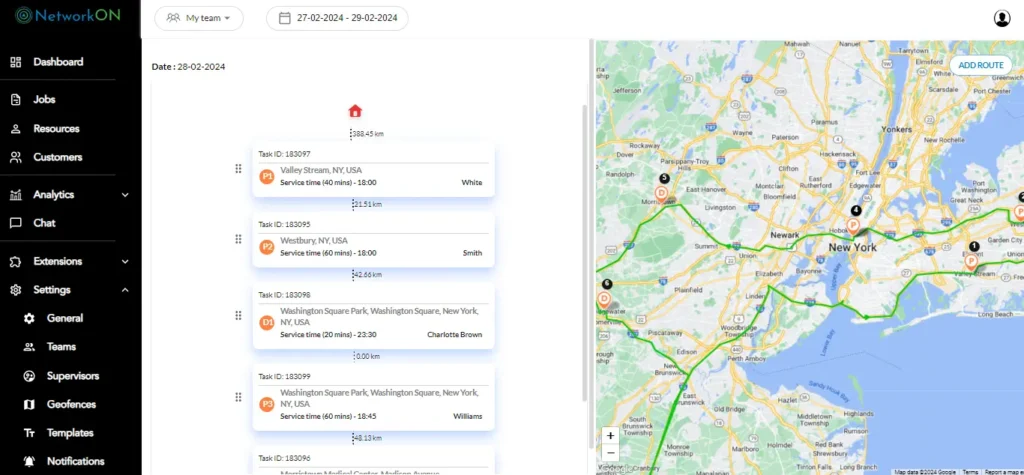
Advancements in route optimization technology transform the efficiency of courier delivery services. By leveraging complex algorithms, GPS data, and traffic patterns, these tools enable businesses to plan the most efficient routes, reducing delivery times and fuel consumption. The result manifests in lower operational costs and a more reliable delivery service.
Understanding the Technologies Behind Route Optimization
Advanced route optimization tools harness the power of machine learning and artificial intelligence to analyze vast quantities of data. These technologies consider various constraints, such as delivery windows, driver schedules, vehicle capacities, and real-time traffic updates. With this information, the software calculates the most time and fuel-efficient routes available.
Empower Your Delivery Workforce with Mobile Apps
Mobile applications in the delivery industry empower drivers and customers by providing valuable, real-time data and tools at their fingertips. Drivers equipped with these applications can navigate efficiently, update delivery statuses, and communicate with dispatch and customers as needed for smooth delivery operations. Customers, on their part, benefit from transparent, up-to-the-minute information regarding their parcel’s journey.
Driver’s Mobile App: Top Features
- GPS tracking for real-time package location
- Route optimization to minimize delivery times and fuel consumption
- Instant delivery updates and customer notifications
- Electronic proof of delivery capture, such as signatures and photos
- Access to delivery schedules and package handling instructions
- Secure messaging with dispatch and customer service teams
These applications streamline the delivery process and enhance the overall experience for all stakeholders.
By enabling drivers with detailed package information, including drop-off instructions and customer preferences, they are more likely to complete deliveries on the first attempt. Moreover, the ease of capturing electronic proof of delivery streamlines the process, allowing faster and more reliable confirmation of package drop-offs.
Such mobile apps are transformative, providing the driver convenience and efficiency while offering customers clarity and confidence in the delivery service. Ultimately, these technologies foster a more collaborative environment where the needs of the field staff align closely with customer expectations and business objectives.
Ensuring Proof of Delivery with Digital Confirmation Tools
Proof of delivery serves as a cornerstone for businesses and customers, framing accountability and completion in the transaction process.
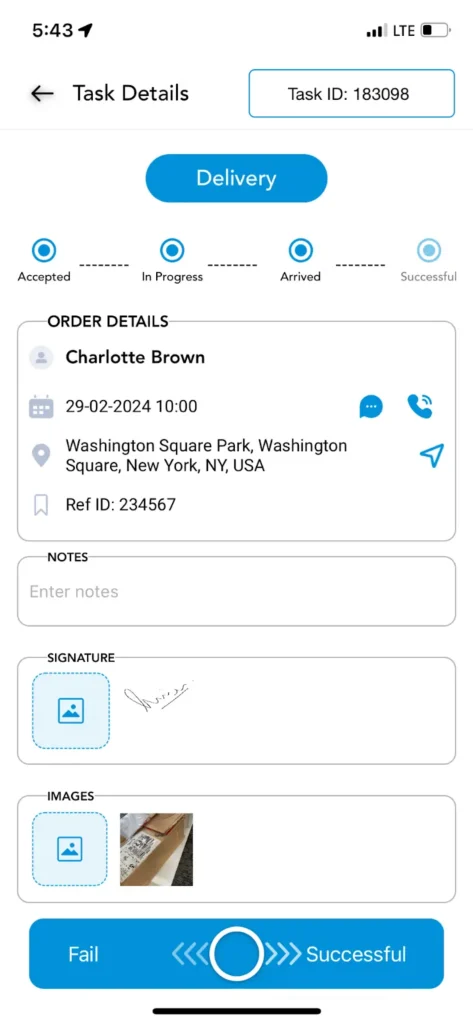
By digitally capturing a recipient’s signature, delivery confirmation becomes instant and indisputable. Companies and customers benefit from a transparent transaction, leaving no room for ambiguities regarding the handover of items.
Signature Capture as an Infallible Acknowledgment
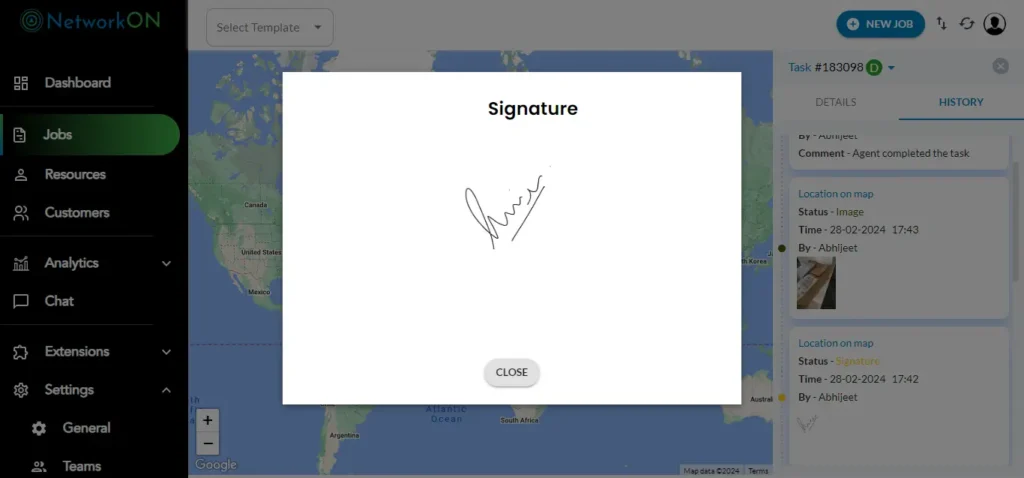
When a delivery staff hands over a package, a quick signature on a mobile device affirms receipt, linking the sign-off directly with the transaction record. This process stands as a digital testament, not just to the delivery itself but also to the condition and exact time of the exchange.
Photo Evidence: Beyond the Signature
When a signature may not suffice, or items are left in a secure location, photo evidence comes into play. Delivery personnel, equipped with smartphones or tablets, snap a photo of the left package, embedding a visual stamp of completion into the tracking system.
- By pairing the time-stamped photo with GPS coordinates, the exact location and time of delivery are unmistakable.
- This method reassures customers of the delivery even in their absence and mitigates disputes and claims of non-delivery.
Courier delivery tracking software facilitates the seamless execution of these digital confirmation tools, becoming a pivotal component in the chain of trust between businesses and their clientele.
Addressing Security and Data Privacy Concerns in Tracking Software
With courier services’ digital transformation, safeguarding sensitive information becomes non-negotiable. Courier delivery tracking software interfaces with a wealth of data, including personal customer details and proprietary business information. In this high-stakes context, comprehending potential security risks is the first line of defense. These risks span unauthorized access, data breaches, and interception of data transmission, which can result in severe reputational and financial damage.
Adopting the industry’s best data privacy and protection practices mitigates these risks. Data encryption, both at rest and in transit, is a powerful tool to protect information from malicious agents. Moreover, robust authentication mechanisms restrict system access to authorized personnel, minimizing the possibility of internal threats. Regular security audits and compliance with standards such as the General Data Protection Regulation (GDPR) further solidify a courier service’s commitment to data privacy.
In deployment, using courier delivery tracking software with these security measures safeguards the company’s operational integrity and reinforces customer trust. Customers value transparency and the assurance that their personal information is handled carefully. Field staff, equipped with secure mobile apps that adhere to these best practices, can confidently operate, knowing they comply with data privacy requirements.
Lastly, continuous monitoring and rapid incident response protocols remain a critical component. These protocols allow courier businesses to detect and counteract security threats promptly. Through diligence and adherence to these established practices, courier services can confidently navigate the digital landscape, championing the safety of their operations and their customers’ data.
Cutting Costs and Boosting Operational Efficiency
The adoption of courier delivery tracking software directly translates to reduced operational expenditures. By automating sorting, dispatch, real-time tracking, and customer notifications, companies significantly lower their overhead related to manual administration and customer service tasks. Precision in these systems circumvents unnecessary costs incurred from delivery errors and optimizes resources at every turn. Furthermore, data-driven decisions from software analytics minimize wastage through more informed management.
Courier delivery tracking software is a linchpin for operational efficiency, demonstrating substantial cost savviness synonymous with sustained corporate growth. Through its multifaceted functionality, this technology is proving to be an operational enhancement and a strategic necessity in the competitive landscape of courier services.
Scaling Your Courier Business with Flexible Software Solutions
As a courier enterprise expands, adapting to increased demand and operational complexity demands flexible software solutions. Tailored software accommodates many deliveries, routes, and customer inquiries, ensuring scalability does not compromise service quality.
Evaluating Software Based on Scalability Potential
Selecting the right courier delivery tracking software hinges on its potential to scale with your business. Scalability encompasses the ability to handle a growing volume of orders and the agility to incorporate new features and capabilities as necessary.
- Software that offers customizable options permits the addition of new shipping routes, integration with additional e-commerce platforms, or enhancement of existing functionalities to meet evolving business needs.
- Adaptable APIs ensure that, as the courier business broadens its horizons, the software can seamlessly connect with new tools and systems, reducing potential disruptions.
- Advanced analytics become crucial for scaling businesses; tracking software with such features can process larger data sets, providing insights critical for strategic decision-making and resource allocation.
Software that cannot scale effectively will require replacement, leading to significant switching costs and disruption. Therefore, due diligence during the selection process can substantially impact long-term success.
Diverse workloads necessitate software that retains performance reliability irrespective of transaction volumes. High-performing tracking systems ensure that customer experience remains unaffected as parcel volumes escalate.
By incorporating flexible software solutions, courier businesses position themselves to embrace growth opportunities without the risk of operational hiccups. This strategic choice actively supports the company’s growth trajectory and paves the way for continued success in a competitive landscape.
Staying Ahead: Emerging Technology Trends and Their Impact on Courier Services
Delivery services navigate a landscape where speed, accuracy, and reliability are paramount. Technologies like artificial intelligence (AI), the Internet of Things (IoT), and blockchain are at the forefront of transforming courier delivery tracking. These advancements are not mere speculation; they directly influence operational efficiencies, enhance customer experiences, and redefine the face of the courier industry.
Artificial Intelligence in Optimizing Delivery Processes
AI reshapes route planning and predictive analysis, resulting in expedited deliveries. Machine learning algorithms process vast datasets, predicting traffic patterns and suggesting optimal routes. Dispatchers harness AI to allocate resources effectively, improving delivery times and reducing operational costs. Drivers equipped with AI-driven assistance can foresee and mitigate potential delays.
The Internet of Things for Enhanced Visibility
IoT devices embedded in vehicles and parcels provide granular tracking capabilities. Real-time data streamed from GPS sensors, RFID tags, and other IoT components offer unprecedented traceability. This connectivity ensures customers and businesses track their shipments accurately, fortifying trust and enhancing service levels.
Blockchain for Security and Transparency
Blockchain technology injects security and transparency into courier services. Every transaction, including handoffs and delivery confirmations, is recorded on a decentralized, immutable, and verifiable ledger. This heightens data security and promotes trust between the customer and the service provider by transparentizing the entire delivery process.
Impact on Courier Delivery Tracking
These technologies collectively contribute to a robust delivery tracking software system. Customers benefit from improved communication and real-time updates, while couriers enjoy streamlined operations and enhanced accountability. Forward-thinking courier services invest in these technologies to adapt to an ever-evolving industry, ensuring their competitive edge and setting new standards in logistics performance.
Key Takeaways
- Real-Time Tracking: Customers expect real-time updates, which enhance satisfaction and reduce anxiety about parcel status.
- Last-Mile Optimization: Advanced software optimizes last-mile delivery with efficient routing and real-time data, reducing costs and improving service.
- Automated Notifications: Proactive SMS, email, and app notifications keep customers informed and reduce service inquiries.
- Seamless Integration: Integrating with existing systems and ensuring scalability supports growth and maintains efficiency.
- Emerging Technologies: AI, IoT, and blockchain enhance route planning, tracking accuracy, and data security, setting new industry standards.
Wrapping It Up!
Small to medium-sized courier companies face a dynamic business landscape where customer expectations are high and efficient operation determines success. Courier delivery tracking software is the cornerstone of modern delivery services, offering unprecedented oversight and control over every aspect of courier management. By effectively utilizing such software, businesses gain the power to elevate the customer experience, optimize driver routes, and revamp management systems.
Adopting advanced tracking solutions is not merely a response to industry trends but a strategic move to sharpen competitive edge. This ensures customers remain informed at every step, from dispatch to delivery. Moreover, mobile app integration empowers field staff, turning their devices into powerful tools for route optimization and real-time communication.
Transform your courier operations with NetworkON. Discover the perfect Courier delivery tracking software tailored to your unique business needs. Our personalized guidance will help you choose the right solution for a scalable, efficiency-driven future. Elevate your delivery services and surpass your customer and business goals with NetworkON. Explore our solutions today!
Frequently Asked Questions
What are the main benefits of using courier delivery tracking software?
Courier delivery tracking software enhances real-time parcel tracking, optimizes last-mile delivery, automates customer notifications, and integrates seamlessly with existing systems, improving operational efficiency and customer satisfaction.
How does real-time tracking improve customer satisfaction?
Real-time tracking provides customers with up-to-date information about their parcels, reducing uncertainty and anxiety. It also decreases the volume of service inquiries and builds trust through transparent communication.
What challenges can be addressed with advanced route optimization tools?
Advanced route optimization tools address challenges such as traffic congestion, route deviations, and delivery scheduling by analyzing real-time data to suggest the most efficient routes, reducing delivery times and operational costs.
How can courier delivery tracking software scale with a growing business?
Scalable courier delivery tracking software can handle increased order volumes, integrate with additional platforms, and adapt to new functionalities. This flexibility ensures that service quality remains high as the business expands.




0 Conversations